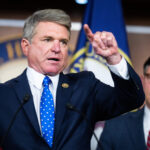In a world where brand equity can shift in a heartbeat and customer loyalty must be earned every day, few executives understand the pulse of a global brand better than Elliott Hill. After decades of shaping Nike’s cultural and commercial edge from within, Hill is back — and his return could signal the dawn of a bold new chapter for the sportswear titan.
The Return of a Titan
Nike’s decision to bring Elliott Hill back into the fold isn’t just a nod to nostalgia or a safe bet on a familiar face. It’s a calculated move aimed at reigniting the company’s brand firepower at a time when innovation, consumer connection, and cultural relevance matter more than ever.
Hill, who previously served as Nike’s President of Consumer and Marketplace, spent over 30 years inside the Swoosh, crafting its global go-to-market strategies, driving direct-to-consumer growth, and redefining how Nike engaged with athletes and communities alike. His departure in 2020 marked the end of a transformational era — but his return hints that the story is far from over.
As Nike navigates through increasing competition from upstarts like On Running and HOKA, a shifting retail landscape, and the growing importance of digital communities, Hill’s leadership may be the critical piece in re-energizing its global dominance.
The Legacy He Brings
Elliott Hill isn’t just another executive returning to familiar territory — he is an architect of Nike’s most powerful eras of growth. When Hill assumed control of Nike’s Consumer and Marketplace organization, he inherited a company in the middle of a pivot: retail partners were changing, digital was rising, and consumers were demanding more personalized, purposeful relationships with brands.
He responded by championing Nike Direct, a business arm that emphasized direct-to-consumer sales through digital platforms and owned stores. Under his leadership, Nike not only grew its DTC revenue but also strengthened its emotional connection with consumers. Stores became brand temples; apps became community hubs.
Hill also played a critical role in Nike’s regional alignment strategy. Recognizing that a consumer in Shanghai didn’t shop or engage like someone in London or Los Angeles, Hill pushed for more agile and locally resonant marketing campaigns. The result was a brand that felt both global and hyper-local — omnipresent but personal.
His tenure was marked by seamless product storytelling, strategic partnerships with athletes and influencers, and an unrelenting focus on consumer data. These foundations remain vital, but under strain in a post-pandemic world that demands more transparency, sustainability, and inclusivity than ever before.
Why Now?
Hill’s return comes at a moment of recalibration for Nike. The company has faced uneven quarters in recent years, wrestling with supply chain disruptions, digital platform transitions, and changing consumer behavior. Its once-unquestioned cultural cachet has been challenged by a younger generation more inclined to experiment with smaller, niche brands that emphasize authenticity over heritage.
There is also the matter of digital transition. While Nike was early to the e-commerce and app game, it now finds itself at an inflection point. The SNKRS app, once a beacon of hype culture, has received criticism for being inaccessible or unpredictable. Meanwhile, community-driven platforms like Discord and TikTok are reshaping what brand loyalty even looks like.
In this context, Hill is more than a steady hand — he’s a visionary with a proven track record of translating cultural trends into business outcomes. Nike’s leadership believes he can reintegrate the magic of its past with the urgency of its future.
The Mandate Ahead
Hill’s new role — though yet to be formally detailed by the company — is expected to focus on reenergizing Nike’s consumer strategy, sharpening brand positioning, and aligning the company’s physical and digital retail ambitions. He will likely work closely with product teams, marketing leads, and regional managers to unify Nike’s next move under a clear and compelling narrative.
1. Reinventing Retail:
Hill is a staunch believer in immersive, meaningful retail experiences. Expect him to double down on transforming Nike’s flagship stores into dynamic brand stages — blending digital and physical storytelling to offer consumers something they can’t get online. This might involve augmented reality in stores, athlete meetups, or exclusive community product drops.
2. Consumer-First Storytelling:
Nike has always been about storytelling — from the “Just Do It” ethos to athlete-led campaigns that spark global conversations. Hill is likely to revisit this strength, pushing for more narrative cohesion across platforms. That could mean deeper athlete collaborations, issue-driven campaigns (think equality, mental health, sustainability), and investing in the next generation of grassroots storytellers.
3. Revitalizing the Digital Ecosystem:
Under Hill’s prior watch, Nike apps like SNKRS, Nike Run Club, and Nike Training Club flourished. But the digital frontier is now more competitive than ever. Hill may push for a reinvention of these platforms, ensuring they feel less transactional and more communal. Expect greater integration of social features, gamification, exclusive content, and AI-powered personalization.
4. Global Youth Reconnection:
Perhaps most importantly, Hill’s challenge will be recapturing the loyalty of Gen Z and Gen Alpha — digital natives with rapidly changing preferences. Nike may revisit its influencer strategy, launch interactive campaigns across emerging platforms, and lean into underrepresented sports and subcultures globally. Hill knows the stakes: brands that fail to earn trust early rarely get a second shot.
Lessons From the Past
Hill’s leadership style has always balanced visionary thinking with operational precision. He is known internally for being collaborative, curious, and obsessively consumer-focused. His past successes weren’t merely the result of bold strategies — they came from listening.
During his previous tenure, Hill was often seen walking store floors, sitting in on focus groups, and analyzing consumer data firsthand. His belief that every product tells a story, and every story must start with the consumer, earned him both respect and results.









